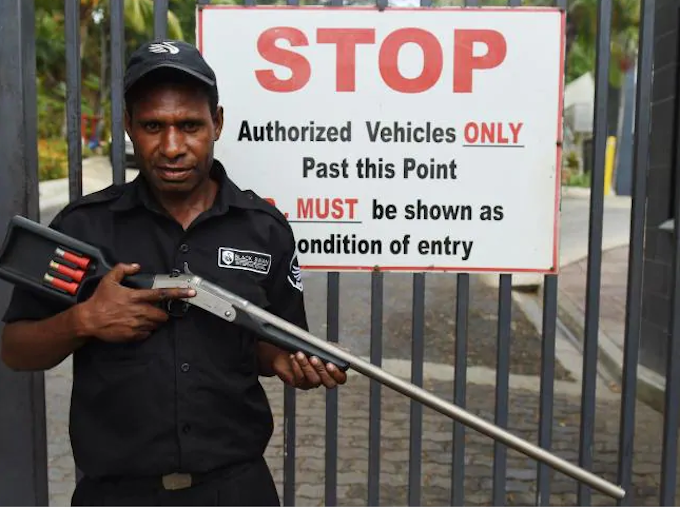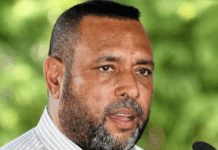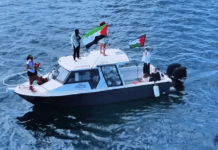
By Jade Bradford in Perth
News that Australian Associated Press has been saved is being welcomed by media outlets in socially and culturally complex Pacific countries such as Papua New Guinea where dramatic and important stories often emerge.
When the closure of AAP was announced earlier this year, concern was expressed by media industry figures in Australia and across the Pacific.
Media outlets in the Pacific, in particular, are under-resourced due to various structural weaknesses and are, therefore, heavily reliant on credible news from Australia provided by AAP.
READ MORE: Loss of AAP a tragedy for entire Pacific
On Friday, AAP announced that a consortium of philanthropists and media executives had expressed interest are making a bid to buy the AAP Newswire service.
The consortium members, including former News Corp CEO Peter Tonagh; Fred Woollard, managing director of Samuel Terry Asset Management; and Kylie Charlton, managing director of Australian Impact Investments; have made an offer to purchase after raising a significant amount of money.
After the proposed closure was announced, Pacnews agency editor Makereta Komai was concerned that this would have a huge impact on the news service she works for and other struggling outlets.
AAP has been “a great and timely source of stories in Australia that are relevant and significant to the Pacific region,” she explained.
Essential tool
In countries like Papua New Guinea, the AAP Newswire service in particular has been an essential tool in achieving a Fourth Estate in terms of framing political issues.
Former AAP bureau chief Liza Kappelle said journalists at AAP focused on trying to make its news “interesting, engaging, informative and dead accurate”.
Among the Pacific countries, Papua New Guinea has by far the largest economy and the biggest population (8.6 million). The region includes approximately 600 small islands, and has more than 800 Indigenous languages with only 13 per cent of the population living in urban areas.
The region has seen a lot of closures and restrictions of news coverage by traditional media organisations at a time when international support is crucial.
Years ago, AAP had a bureau in Suva, Fiji, which was an important part of the region’s coverage. Then it was left with just one bureau, in Port Moresby. When that was closed in 2013, Australia broke 60 years of print media coverage on the ground in Papua New Guinea.
This left only the ABC’s broadcast media coverage, which has also been reduced due to the Australian government’s budget cuts.
In West Papua, the war of independence has intensified and Indonesia has banned media coverage of the conflict.
Media independence eroded
Successive governments in Papua New Guinea have been accused of eroding media independence.
Former Prime Minister Peter O’Neill was recently arrested under suspicion of corruption, having “bought” some leading journalists. Journalists and the media have increasingly come under threat legally and politically with restrictive legislation, intimidation, assaults, police and military brutality as well as illegal detention.
All this has occurred while Australia’s voice in the region has begun to fall silent.
China’s encroaching influence on the Pacific has made the struggle for media freedom in the region even harder. This is further complicated by Australia’s media freedom being also on a decline.
Consequently, Australia is no longer a press freedom role model for the Pacific. This year, Australia dropped five places to be rated at number 26 on the Reporters Without Borders World Press Freedom Index.
Pacific Media Centre director Professor David Robie says lack of media diversity in Australia is directly impacting on Australia’s poor press freedom rankings. He made comparisons to when press freedom began decreasing after the country’s media independence had been quite strong.
But then the first two military coups occurred in 1987.
Never known ‘truly free press’
“There is now a generation of journalists in Fiji who have never known what it’s like to have a truly free press,” said Dr Robie, who is also editor of Asia Pacific Report.
Here in Australia, it has become increasingly difficult for journalists to report on political issues. Laws have been introduced in recent years banning journalists from reporting on Australia’s refugee detention centres in Papua New Guinea’s capital, Port Moresby, and also on Manus Island.
Australian law enforcement can probe into the identities of whistle-blowers and anonymous sources while seizing journalist’s documents and electronic devices.
The erosion of public interest journalism has left the Australian public with little understanding of what is happening in and around the Pacific Islands.
A survey by the International Federation of Journalists found nearly one in four journalists in countries including Australia, said accessing information from government or official sources was becoming more difficult.
The editor of Croakey Health Media, Dr Melissa Sweet, who has previously worked at AAP, knows this all too well, and said: “Nowadays you’ve got snowballs’ [little chance in hell] of getting people to talk to you, unless perhaps they are whistle blowers.
Tip of the iceberg
“Whistle blowers are really the tip of the iceberg in terms of who you need to communicate with to understand what’s going on in governments and organisations.
“I remember… back when I was at the AAP in the eighties, there were various meetings that I could go and report from and on that were open to the public that are now closed. Back in those days I had much better access, whether it was health ministers or health bureaucrats on all sorts of levels,” she recalls.
“People within government or bureaucracies have been unwilling to talk for a very long time. This has been a long-term trend.”
The declining plurality of the media in Australia has led to one of the most concentrated levels of media ownership in the world. Two parties own almost all privately owned media in Australia – Rupert Murdoch’s $16.3 billion dollar company, News Corp, and Nine Entertainment, which is run by a consortium created by company founders, the Packer family.
Prior to the purchase offer announcement, Murdoch’s News Corp, along with Nine Entertainment, were the two main shareholders of AAP, which has been described as the “Australian democracy safety net”.
The shareholders decided in March, that after 85 years in operation the country’s only national newswire service was no longer profitable and they announced plans for its closure on June 26 this year.
The Australian Journalism union, MEAA, blasted the shareholders’ decision, calling it “irresponsible,” “devastating” and “reckless.”
Worst time for Pacific media
The announcement could not have come at a worse time for media in the Pacific, where local media companies lack the clout to stand up to authoritarian governments. It is unknown what impact covid-19 will have on the region.
Recently, politicians and authorities in Fiji and Papua New Guinea have been accused of silencing criticism by sheltering behind emergency lockdown laws.
After the announcement in March, speculation arose about the reasons for the AAP closure. Kappelle, said she could not recall the exact words of chairman Campbell Reid. But when asked if the closure was because NewsCorp and Nine were tired of subsidising a breaking newswire service for their competitors, she answered, “That’s definitely the gist of it.”
The closure would certainly weaken competition from other news outlets. Murdoch, who has a personal fortune of $17.6 billion, has recently been accused of using the covid-19 crisis as an excuse to scrap regional newspaper titles within Australia.
Following the announcement, it was revealed that both NewsCorp and Nine had made plans to open their own breaking newswire services. However, both shareholders publicly blamed digital competitors Google and Facebook for the AAP’s demise.
Dr Sweet was devasted to hear of the proposed closure, saying it would impact on journalism globally. She explained it as a situation where people did not understand the current crisis facing many journalists and news outlets and that it was not only related to AAP, but to public interest journalism more broadly.
Vested interest reasons
“I guess as an industry we just haven’t done a very good job of explaining it and there’s vested interest reasons around that. No media outlet wants to say to you ‘we are going to hell in a hand basket’. They all want to keep trying to pretend that they are doing good journalism,” she explained.
“Whereas, the industry is obviously showing the strain of losing so many journalists, closing so many newsrooms, leaving so many communities under-served and under-covered.”
Prior to purchase offer announcement, Dr Sweet said it would be terrific if the people investing in the AAP newswire service weren’t just doing it because they wanted to make money, but so that journalism had a “public good model” that would fit with the history of AAP.
Professor Robie described continued coverage of regions such as Papua New Guinea, as vitally important, saying the country had “a treasure trove of dramatic and important stories.
“The security issues with the struggle of the Papuan people seeking independence are highly sensitive. Where the Australian media withdraws in the Pacific, Chinese media influences will take over.”
Jade Bradford is a student journalist at Curtin University in Western Australia. This article was first published in the journalism programme’s online newspaper Western Independent.












































